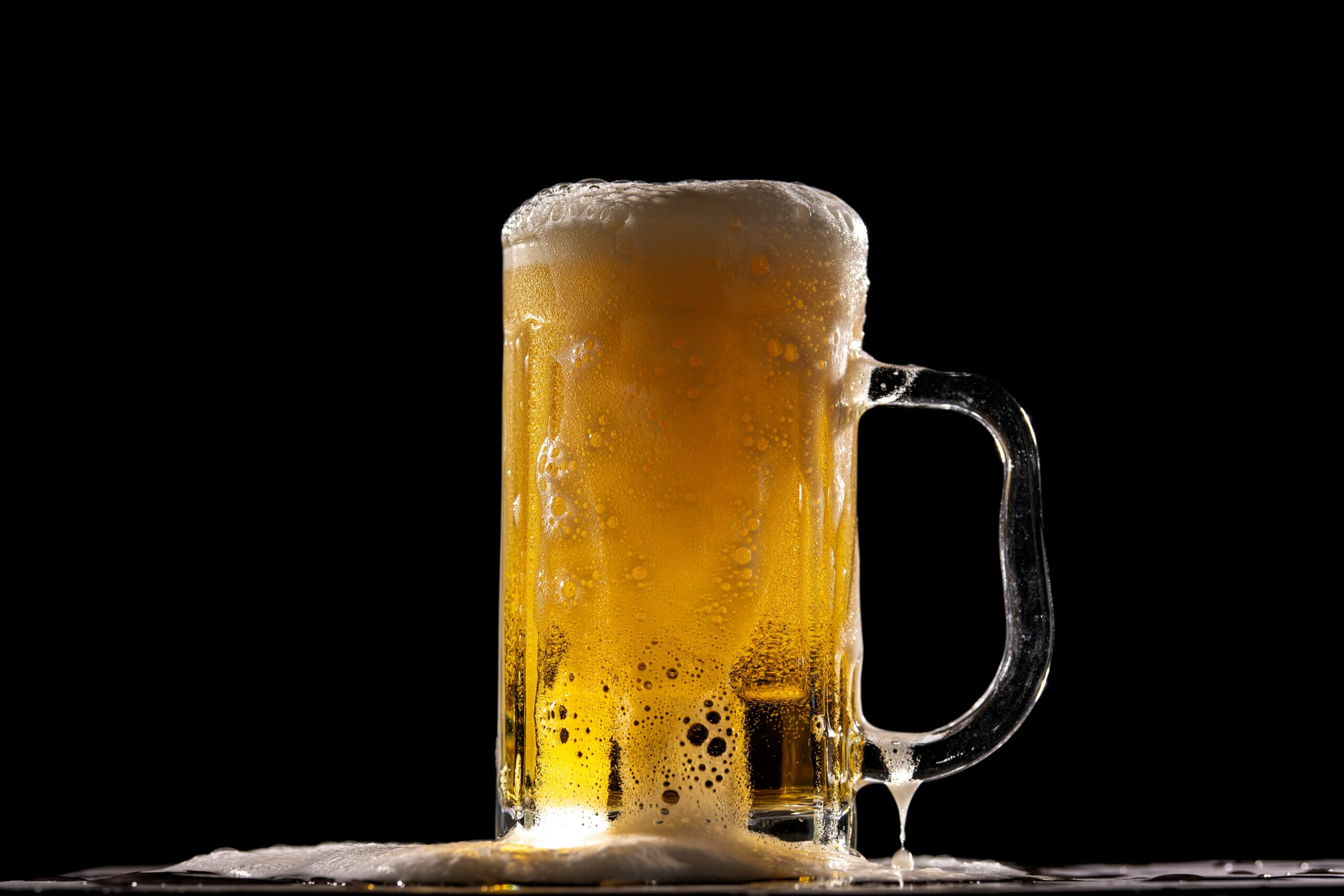Introduction to Beer Mugs
Beer mugs have long held a prominent place in the world of beer culture, serving not only as vessels for consuming this beloved beverage but also as symbols of camaraderie and celebration. The significance of these containers transcends mere functionality; they contribute to the overall enjoyment of drinking beer. With a rich history that dates back centuries, beer mugs have evolved in design and style, reflecting the cultural values of different eras and societies.
The enjoyment of drinking beer is often heightened by the vessel in which it is served. A well-designed beer mug can influence the temperature, carbonation, and aroma of the beer, all of which play a crucial role in the tasting experience. The choice of a beer mug can be particularly impactful during social gatherings, where the right glassware serves to enhance the appreciation of various beer styles. Whether one prefers a stout served in a classic ceramic mug or a lager enjoyed from a sleek pint glass, the selection of the right beer mug can significantly affect one’s overall experience.
Moreover, beer mugs are often associated with tradition and socialization. Many cultures feature distinct styles of mugs, which can also convey a sense of identity and pride among beer enthusiasts. Events ranging from casual meet-ups to festive beer festivals frequently spotlight the importance of beer mugs in fostering connections and celebrations. Consequently, the act of choosing the appropriate mug becomes more than just a practical decision; it is an integral part of the ritual of beer appreciation.
As we delve deeper into the world of beer mugs throughout this guide, we will explore their historical significance, various types, and how they can dramatically enhance the perfect brew experience. Understanding these aspects will provide deeper insight into why the right beer mug matters in both casual and formal beer settings.
A Brief History of Beer Mugs
The history of beer mugs is a fascinating journey that reflects the evolution of beverage consumption and societal customs across different cultures. Beer mugs have been in existence since ancient times, originating as simple drinking vessels crafted from materials readily available to early civilizations. The earliest known examples date back to the Stone Age, where rudimentary containers were fashioned from clay, stone, and wood. As beer production became more prevalent in the Sumerian and Egyptian cultures, drinking vessels evolved correspondingly, leading to the creation of more sophisticated beer mugs.
During the Middle Ages, when brewing became a significant aspect of European life, beer mugs saw a marked transformation. The craftsmanship improved, and various materials were employed, including pewter and glass. Pewter mugs, often ornately designed, became symbols of status and wealth. Many of these mugs featured detailed engravings that reflected the cultural values and artistic trends of the time. In this period, mugs served not just a functional purpose but were also representative of one’s social standing and community identity.
The Renaissance brought about a renewed interest in artistry, which was mirrored in beer mug designs. This era saw the emergence of ceramics decorated with beautiful glazes and intricate patterns. The Art Deco and Victorian periods further diversified styles, introducing innovative shapes and more elaborate decorations. As industrialization took hold, beer mugs became mass-produced, making them more accessible to the general population. However, the emphasis on quality and craftsmanship continued to resonate, as beer enthusiasts began to appreciate the significance of using the right vessel for their chosen brew.
In conclusion, the historical evolution of beer mugs is a testament to societal changes and cultural influences over the centuries. From their humble beginnings to their intricate designs today, beer mugs continue to be an integral part of the brewing experience, enhancing the enjoyment of beer across myriad settings and occasions.
Types of Beer Mugs
The world of beer mugs is rich and diverse, featuring a variety of styles, each with its own distinct characteristics and purposes. Understanding the different types of beer mugs can enhance the overall brewing experience, as each design influences not just the aesthetics but also the sensory enjoyment of beer.
One of the most iconic types is the traditional beer stein. Originating from Germany, steins are typically crafted from stoneware, porcelain, or glass and often adorned with intricate designs. They are characterized by their sturdy handle and a lid, which was historically designed to keep contaminants out of the beer. The stein’s robust nature allows it to maintain beer’s cold temperatures longer, making it an excellent choice for enjoying a crisp lager or a rich stout.
Pint glasses are another popular type, especially in pubs and bars. They usually hold 16 ounces and come in various shapes, including the standard pint glass and the curved British pint. The straightforward design of pint glasses allows for easy stacking and storage, making them practical for both casual and formal settings. Their wide mouth also enhances the aroma, which can elevate the drinking experience by subtly highlighting hops and malts.
Tankards, often made from stainless steel or pewter, offer a historical charm reminiscent of medieval taverns. With their thick walls and heavy bases, tankards maintain the temperature of the beer while providing a satisfying weight in hand. This type of beer mug is perfect for enjoying hearty ales or porters, bringing a tactile and atmospheric element to the drinking experience.
Finally, there are novelty mugs, which often feature unique designs or themes. While they may not be suitable for every occasion, they provide a fun twist for special events or promotions. Each type of beer mug plays a significant role in shaping the beer-drinking experience, allowing enthusiasts to appreciate their favorite brews more fully.
Materials Used in Beer Mug Production
Beer mugs are traditionally crafted from a variety of materials, each offering unique characteristics that influence the overall drinking experience. The most common materials include glass, ceramic, metal, and plastic, each with its own set of advantages and disadvantages.
Glass beer mugs are popular for their aesthetic appeal; they allow the drinker to appreciate the color and carbonation of the beer. Glass also provides a non-reactive surface, preserving the beer’s flavor without imparting any unwanted tastes. However, glass mugs can be prone to shattering, making them less durable than some alternatives, especially in outdoor settings.
Ceramic mugs, often adorned with decorative designs, offer excellent insulation properties, keeping beer colder for longer periods. Their thick walls provide sturdiness, reducing the risk of breakage. However, ceramic can be more challenging to clean compared to other materials, and if not properly glazed, it may occasionally absorb flavors from prior beverages.
Metal mugs, typically made from stainless steel or aluminum, provide outstanding durability and insulation. Many metal beer mugs feature double-walled constructions that effectively maintain temperature, ensuring that your brew remains cold. The downside is that metal can sometimes alter the taste of the beer, resulting in a less authentic drinking experience.
Lastly, plastic mugs present an affordable, lightweight option that is ideal for casual settings such as picnics or outdoor festivals. They are virtually unbreakable, making them safe for various use cases. However, plastic does not offer the same level of insulation as glass or ceramic, and the aesthetic appeal may be less satisfying for beer connoisseurs.
Each material has its own strengths and weaknesses, and the choice of beer mug ultimately depends on individual preferences and specific drinking contexts.
How to Choose the Right Beer Mug
Selecting the perfect beer mug involves understanding various factors that can significantly enhance your drinking experience. The first consideration should be the type of beer that you plan to enjoy. Different styles of beer, such as ales, lagers, or stouts, often have specific glassware associated with them. For instance, a pint glass is commonly used for ales, while a tulip glass is ideal for stronger craft beers, as it helps to concentrate the rich aromas. Therefore, knowing the beer type can guide you towards choosing the most suitable mug.
Next, personal style is an important element to consider. Beer mugs come in a variety of materials, including glass, ceramic, stainless steel, and even plastic. Each material brings a unique aesthetic and feel, which contributes to the overall beer experience. Glass mugs, for example, allow one to appreciate the color and carbonation of the beer, while ceramic or stainless steel options may offer better insulation for temperature retention. Reflect on which style resonates with your taste and complements your drinking environment.
Occasion is another factor that should inform your choice. Whether it’s a casual gathering, a formal event, or a festive celebration, the beer mug should align with the ambiance. For outdoor gatherings, rugged stainless steel or insulated mugs may be more practical. Conversely, for a sophisticated dinner, elegant glassware might be more appropriate. Lastly, practicality cannot be overlooked; consider factors such as weight, handle design, and ease of cleaning. A mug that is too heavy may become cumbersome, while one that is easy to clean will make your beer enjoyment even more pleasurable.
Care and Maintenance of Beer Mugs
Proper care and maintenance of beer mugs are essential to preserve their condition and enhance your brewing experience. Different materials require different cleaning techniques. For instance, glass beer mugs are widely popular due to their aesthetic appeal and ability to showcase the drink’s color. It is recommended to wash them by hand using warm soapy water and a soft sponge. This method ensures that they are free from scratches and minimizes the risk of chips. Avoid abrasive cleaners and sponges as they can damage the surface.
For ceramic or stoneware beer mugs, similar handwashing is advisable. However, some manufacturers specify that certain pieces are dishwasher safe. Always check the guidelines before proceeding, as high temperatures and strong detergents can affect the glaze and design. If you choose to use a dishwasher, place the mugs securely on the top rack and avoid overcrowding, which may lead to breakage.
Metal beer mugs, often made from stainless steel or aluminum, are durable and can withstand rough treatment. They can generally be cleaned in the dishwasher, although handwashing is still recommended to maintain their shine. Ensure a thorough rinse after washing to remove any detergent residue that might interfere with the beer’s taste. It is also wise to dry the mugs promptly to prevent water spots.
Storage also plays a crucial role in the longevity of beer mugs. Store them upright in a dedicated cabinet or shelf to avoid accidental knocks or breakage. If you have a collection that you display, consider using felt pads or coasters underneath to prevent damage from scratches on the surface. By following these care and maintenance guidelines, beer mugs can remain in excellent condition, enhancing the overall enjoyment of your brew experience.
DIY Beer Mug Crafting
Crafting your own beer mugs can be both a fulfilling and enjoyable project that allows for personalization and creativity. With a few essential materials and steps, you can create a unique beer mug that reflects your style and preferences. To get started, consider using sturdy materials such as ceramic, glass, or even wood, as these can withstand regular use and enhance the drinking experience.
For a ceramic beer mug, you’ll need clay, sculpting tools, and a kiln for firing the final product. Begin by kneading the clay and shaping it into your desired mug form. After shaping, allow the mug to dry before firing it in the kiln according to the manufacturer’s instructions. Once fired, you can add colors or glazes to personalize your creation.
If you prefer working with glass, you can use glass-paint or etching cream to decorate a pre-made glass mug. Start by cleaning the surface of the glass to ensure the paint adheres properly. Create stencils or freehand designs that resonate with your beer preferences, and allow the paint to cure according to the instructions provided on the packaging.
For those interested in woodworking, crafting a wooden beer mug can be a splendid choice. Choose a suitable type of wood for durability, such as oak or maple. Use a lathe for shaping the wood and sand it down for a smooth finish. Afterward, treat the wood with a food-safe sealant or varnish to protect it from moisture and enhance its longevity.
While crafting beer mugs, feel free to add distinctive touches such as handles, unique shapes, or inscriptions. As you engage in this creative endeavor, consider the styles and themes that resonate with you. Crafting your beer mug not only elevates your drinking experience but also adds a personal touch to your gatherings.
Beer Mug Etiquette
The enjoyment of beer often goes hand in hand with certain unwritten rules that enhance the social experience surrounding craft brews. Understanding beer mug etiquette can enrich gatherings and foster a sense of camaraderie among friends. Proper toasting techniques, for instance, play a crucial role in beer consumption and social interactions. When raising a mug, it is customary to make eye contact with fellow drinkers and to offer a sincere sentiment, such as “Sláinte” (health) in Irish culture or “Prost” in German. This act of giving and receiving a toast not only symbolizes goodwill but also ensures that the moment is shared and appreciated among all participants.
Handling mugs appropriately in group settings is also essential. It is advisable to be mindful of the size and fullness of your beer mug, particularly in crowded situations. When passing a mug or serving beer, always do so with care to avoid spills and maintain an atmosphere of respect and enjoyment. Additionally, when attending gatherings, one might encounter people who prefer different styles of beer. Acknowledging these preferences and respecting the choice of mugs and styles of beer contributes to an inclusive social environment.
Respecting the customs of different cultures regarding beer consumption is another fundamental aspect of beer mug etiquette. In various countries, drinking beer comes with its own set of customs. For example, in Japan, pouring beer for others is a sign of respect, and failing to do so may be perceived as rude. Familiarity with such cultural norms not only enriches the beer-drinking experience but also promotes understanding and appreciation of different traditions. When enjoying beer, adhering to these social norms fosters a positive environment, making the time spent sharing a brew with friends truly memorable.
Conclusion: Elevating Your Beer Experience
As we have explored throughout this guide, the selection of the right beer mug can significantly influence your overall beer-drinking experience. Each type of beer mug serves not only a functional purpose but also enhances the sensory aspects of enjoying your favorite brew. From classic steins to modern pint glasses, understanding the characteristics of various mugs, such as material, shape, and capacity, can help you make an informed decision that aligns with the style of beer you prefer.
Moreover, we discussed the historical significance of beer mugs and how their evolution reflects changing trends in beer consumption. Different cultures have their unique styles of beer mugs, which not only showcase the authenticity of the beverage but also celebrate cultural heritage. By choosing a mug that resonates with the beer you are savoring, you enrich your drinking experience and foster a deeper appreciation for the craftsmanship involved in both the beer and the vessel.
We encourage readers to experiment with different types of beer mugs to find what works best for their taste preferences. Each mug can provide a distinct drinking experience, affecting not only the beer’s aroma and flavor but also the enjoyment of social interactions while drinking. It may even be worth considering personalized or handcrafted beer mugs for a unique touch. Sharing thoughts and preferences with fellow enthusiasts can lead to exciting discoveries and enhance one’s beer journey.
In conclusion, elevating your beer experience involves more than just selecting a brew; it encompasses the art of choosing the right beer mug to amplify your overall enjoyment. As you embark on this exploration, remember that each sip can be uniquely enhanced by the mug that holds it. Cheers to your beer adventures and the limitless possibilities they present!


